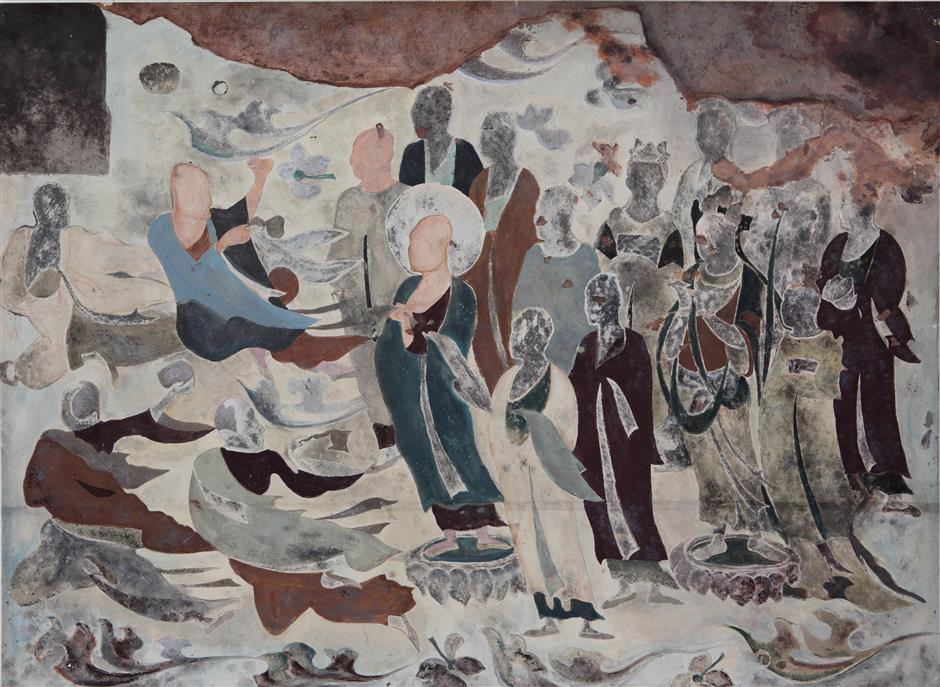Intriguing exhibit unearths cradle of Chinese Buddhist culture

"Devas Attending a Sermon" (Northern Zhou Dynasty, AD 557-580), Cave 4, Maijishan Grottoes, copied by Wang Yuqi
A captivating new art exhibition, “Blissful Land: Into the Depth of Statues & Murals,” recently unveiled at the Shanghai Himalayas Museum, promises to leave visitors intrigued.
The exhibit, which runs until May 28, showcases nearly 80 artworks that have never been seen in public before.
Organized by the Shanghai Himalayas Museum, Qiuci Institute of Xinjiang Uygur Autonomous Region and the Art Institute of Maijishan Caves, the exhibition displays reproduced murals and statues from Qiuci or Kucha, reputed as the cradle of Chinese Buddhist culture, and Maijishan Caves, one of the four largest grottoes in China.
The mural paintings from the Qiuci Grottoes and Maijishan Grottoes, as well as the colored clay sculptures, revealed “vital cultural and artistic chapters” on the ancient Silk Road.
For many, Qiuci is a familiar name while Maijishan may sound a little alien.
The Maijishan Grottoes, some 35 kilometers to the southeast of Tianshui City, Gansu Province, feature one of the most famous grotto temples in China.
Founded after the Qin Dynasty (221-206 BC), among the 16 kingdoms, the grottoes have been excavated and restored by a dozen dynasties, including the Northern Wei Dynasty, Western Wei Dynasty, Northern Zhou Dynasty, Sui and Tang dynasties and Ming and Qing dynasties.
The artistic characteristics of the Maijishan Grottoes lie in its combination of architecture, sculpture and fresco. In particular, they are well-known for the sculptures, all of which, whether simple and robust in earlier times, thin and elongated in the Northern Wei Dynasty, vigorous and full in the Northern Zhou Dynasty, plump and mellow in the Sui and Tang dynasties, or secular in the Song Dynasty, are lifelike, gentle, amiable and full of vitality and remain connected with the Central Plains (the middle and lower reaches of the Yellow River).
Due to the erosion of time, some of the statues and murals in the caves have severely been broken, which made the copies more precious as a record of the Buddhist history and culture.
Exhibition details
Date: Through May 28, 10am-6pm
Venue: Shanghai Himalayas Museum
Address: 3/F, Himalayas Center, 869 Yinhua Rd, Pudong New Area

"The Prince's Luxurious Life in the Palace" (3rd century), Cave 118, Kezier Grottoes, copied by Wu Junsheng
















